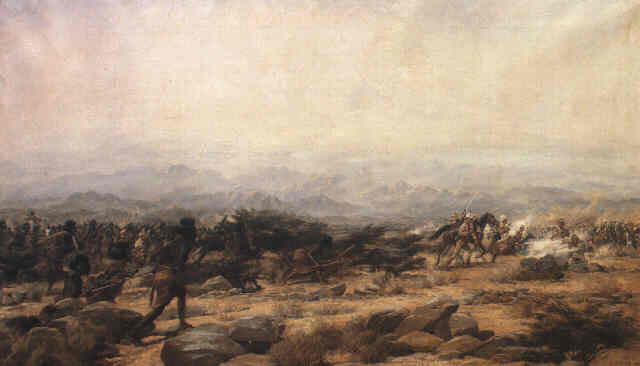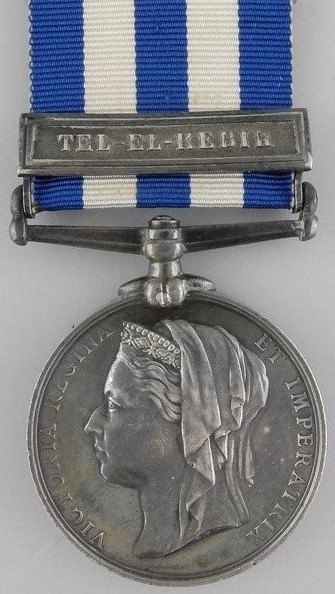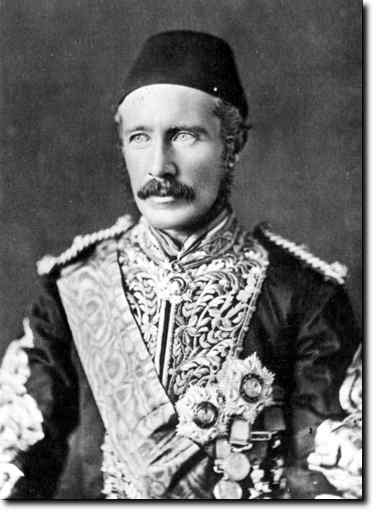|
John MacRae-Gilstrap
Lieutenant Colonel John MacRae-Gilstrap (31 December 1861 – January 1937) was a British army officer and a senior figure of the Clan Macrae. He contested a rival claim to the chiefship of the clan, and in 1912 he purchased and subsequently restored the Macrae stronghold of Eilean Donan Castle on Loch Duich in the west of Scotland. Family John MacRae was the second son of Duncan MacRae and Grace Stewart. He was born in the Punjab where his father had served as a surgeon with the East India Company during the Indian Rebellion of 1857. The family later returned to Scotland, where Duncan MacRae took up residence at Kames Castle in Bute, becoming Deputy Lieutenant of Buteshire; his older brother Stuart, though also born in India and Scottish by heritage, later played international football for England in the 1880s.Stuart MacRae Scots Footbal ... [...More Info...] [...Related Items...] OR: [Wikipedia] [Google] [Baidu] |
Eilean Donan Castle
Eilean Donan ( gd, Eilean Donnain) is a small tidal island situated at the confluence of three sea lochs (Loch Duich, Loch Long and Loch Alsh) in the western Highlands of Scotland, about from the village of Dornie. It is connected to the mainland by a footbridge that was installed early in the 20th century and is dominated by a picturesque castle that frequently appears in photographs, film and television. The island's original castle was built in the thirteenth century; it became a stronghold of the Clan Mackenzie and their allies, the Clan MacRae. However, in response to the Mackenzies' involvement in the Jacobite rebellions early in the 18th century, government ships destroyed the castle in 1719. The present-day castle is Lieutenant-Colonel John Macrae-Gilstrap's 20th-century reconstruction of the old castle. Eilean Donan is part of the Kintail National Scenic Area, one of 40 in Scotland. In 2001, the island had a recorded population of just one person, but there were no ... [...More Info...] [...Related Items...] OR: [Wikipedia] [Google] [Baidu] |
Clan Macrae
The Clan Macrae is a Highland Scottish clan. The clan has no chief; it is therefore considered an armigerous clan. Surname The surname Macrae (and its variations) is an anglicisation of the patronymic from the Gaelic personal name ''MacRaith''. This personal name means "son of grace". Traditional origins of the clan According to the late 19th-century historian Alexander Mackenzie, and Rev. Alexander Macrae in the early 20th century, the main authority for the early history of Clan Macrae is the late 17th-century manuscript account of the clan written by Rev. John Macrae. Alexander Macrae largely based his history of the clan upon John Macrae's earlier account. According to tradition, the Macraes were originally from Ireland and shared a common ancestry with the Mackenzies and Macleans. The Macraes were said to have originated from Clunes, which is located near the southern shore of the Beauly Firth, and was within the lordship of Lovat. Alexander Macrae stated that these t ... [...More Info...] [...Related Items...] OR: [Wikipedia] [Google] [Baidu] |
Battle Of Tamai
The Battle of Tamai (or Tamanieh) took place on 13 March 1884 between a British force under Sir Gerald Graham and a Mahdist Sudanese army led by Osman Digna. Despite his earlier victory at El Teb, Graham realised that Osman Digna's force was far from broken and that he still enjoyed support among the local population. Accordingly, a second expedition departed from Suakin on 10 March in order to defeat the Mahdists definitively. The force was composed of the same units that had fought at El Teb: 4,500 men, with 22 guns and 6 machine guns. The Mahdists had roughly 10,000 men, most of them belonging to Osman Digna's Hadendoa tribe (known to British soldiers as " Fuzzy Wuzzies" for their unique hair). Forces The British forces involved in the battle were: * Squadron from 10th Hussars * Squadron from 19th Hussars * 1st Battalion, The Black Watch (Royal Highlanders) * 3rd Battalion, The King's Royal Rifle Corps * 1st Battalion, York and Lancaster Regiment * 1st Battalion, Gordo ... [...More Info...] [...Related Items...] OR: [Wikipedia] [Google] [Baidu] |
Perth, Scotland
Perth (Scottish English, locally: ; gd, Peairt ) is a city in central Scotland, on the banks of the River Tay. It is the administrative centre of Perth and Kinross council area and the historic county town of Perthshire. It had a population of about 47,430 in 2018. There has been a settlement at Perth since prehistory, prehistoric times. It is a natural mound raised slightly above the flood plain of the Tay, at a place where the river could be crossed on foot at low tide. The area surrounding the modern city is known to have been occupied ever since Mesolithic hunter-gatherers arrived there more than 8,000 years ago. Nearby Neolithic standing stones and circles date from about 4,000 BC, a period that followed the introduction of farming into the area. Close to Perth is Scone Abbey, which formerly housed the Stone of Scone (also known as the Stone of Destiny), on which the King of Scots were traditionally crowned. This enhanced the early importance of the city, and Perth becam ... [...More Info...] [...Related Items...] OR: [Wikipedia] [Google] [Baidu] |
Malta Colony
The Crown Colony of the Island of Malta and its Dependencies (commonly known as the Crown Colony of Malta or simply Malta) was the British colony in the Maltese islands, today the modern Republic of Malta. It was established when the Malta Protectorate was transformed into a British Crown colony in 1813, and this was confirmed by the Treaty of Paris in 1814. Establishment and early years (1813–1824) From 1530 to 1798, Malta had been ruled by the Order of Saint John. The Order was ousted during the War of the Second Coalition and Malta was occupied by Napoleon. The Maltese rebelled after a couple of months of French rule and asked Britain for help. Eventually, the French capitulated in 1800 and Malta voluntarily became a British protectorate. Britain was then supposed to evacuate the island according to the terms of the Treaty of Amiens of 1802, but failed to keep this obligation – one of several mutual cases of non-adherence to the treaty, which eventually led to its c ... [...More Info...] [...Related Items...] OR: [Wikipedia] [Google] [Baidu] |
Khedive's Star
The Khedive's Star was a campaign medal established by Khedive Tewfik Pasha to reward those who had participated in the military campaigns in Egypt and the Sudan between 1882 and 1891. This included British forces who served during the 1882 Anglo-Egyptian War and the subsequent Mahdist War, who received both the British Egypt Medal and the Khedive's Star. Cast in bronze and lacquered, it is also known as the Khedive's Bronze Star. History After the outbreak of the Anglo-Egyptian War in 1882, the United Kingdom met with opposition from Ahmed ‘Urabi a nationalist and supporter of Egyptian independence. The British success in the war strengthened the position of the Khedive of Egypt, Tewfik Pasha, a supporter of the British government, who decided to reward all British and Indian Army soldiers who took part in the campaign and who had received the British Egypt Medal. Permission was granted to wear the star in uniform. The award of the Star was extended to the subsequent Mahdist Wa ... [...More Info...] [...Related Items...] OR: [Wikipedia] [Google] [Baidu] |
Egypt Medal
The Egypt Medal (1882–1889) was awarded for the military actions involving the British Army and Royal Navy during the 1882 Anglo-Egyptian War and in the Sudan between 1884 and 1889. Resentment at increasing British and other European involvement in Egypt since the opening of the Suez Canal in 1869 triggered an Egyptian army mutiny that threatened the authority of the British-backed Khedive of Egypt, Tewfik Pasha. The British military intervention was in response, to protect British interests. Once in Egypt, the British became involved in the conflicts in the Sudan, which Egypt had occupied since the 1820s. All recipients of the Egypt Medal were also eligible for one of the four versions of the Khedive's Star. Description The medal had the following design: *Circular, in silver and in diameter. *Obverse: the veiled head of Queen Victoria with the Latin legend "VICTORIA REGINA ET IMPERATRIX". ('Victoria, Queen and Empress'). *Reverse: the Sphinx on a pedestal with the wo ... [...More Info...] [...Related Items...] OR: [Wikipedia] [Google] [Baidu] |
Mentioned In Despatches
To be mentioned in dispatches (or despatches, MiD) describes a member of the armed forces whose name appears in an official report written by a superior officer and sent to the high command, in which their gallant or meritorious action in the face of the enemy is described. In some countries, a service member's name must be mentioned in dispatches as a condition for receiving certain decorations. United Kingdom, British Empire, and Commonwealth of Nations Servicemen and women of the British Empire or the Commonwealth who are mentioned in despatches (MiD) are not awarded a medal for their actions, but receive a certificate and wear an oak leaf device on the ribbon of the appropriate campaign medal. A smaller version of the oak leaf device is attached to the ribbon when worn alone. Prior to 2014, only one device could be worn on a ribbon, irrespective of the number of times the recipient was mentioned in despatches. Where no campaign medal is awarded, the oak leaf is worn direc ... [...More Info...] [...Related Items...] OR: [Wikipedia] [Google] [Baidu] |
Battle Of Kirbekan
The Battle of Kirbekan was a battle in the Mahdist War. It was fought February 10, 1885, when the British Nile Column, about 1,000 strong, under General Earle, stormed the heights of Kirbekan, which were held by a strong Mahdist force, and totally routed them, with heavy loss. Background The British lost 60, among whom was General William Earle, killed. It was the first appearance of the Egyptian Army Camel Corps under Bimbashi Marriott in action. A brass plaque on the North wall of Lichfield Cathedral commemorates the death of Lieutenant colonel Philip Eyre of the First South Staffordshire Regiment in the battle. Forces The British forces involved in the battle were: * Squadron from 19th Hussars * 1st Battalion, South Staffordshire Regiment * 1st Battalion, The Black Watch (Royal Highlanders) * D Company, 1st Battalion, Gordon Highlanders * 45 Boatmen from Canada Canada is a country in North America. Its ten provinces and three territories extend from the ... [...More Info...] [...Related Items...] OR: [Wikipedia] [Google] [Baidu] |
Siege Of Khartoum
The Siege of Khartoum (also known as the Battle of Khartoum or Fall of Khartoum) occurred from 13 March 1884 to 26 January 1885. Sudanese Mahdist forces captured the city of Khartoum from its Egyptian garrison, thereby gaining control over the whole of Sudan. Egypt had controlled Sudan since 1820, but had itself come under British domination in 1882. In 1881, the Mahdist Revolt began in Sudan, led by Muhammad Ahmad who claimed to be the Mahdi. The Egyptian army was unable to suppress the revolt, being defeated in several battles and retreating to their garrisons. The British refused to send a military force to the area, instead appointing Charles George Gordon as Governor-General of Sudan, with orders to evacuate Khartoum and the other garrisons. Gordon arrived in Khartoum in February 1884, where he found it impossible to reach the other garrisons which were already besieged. Rather than evacuating immediately, Gordon began to fortify the city, which was cut off when the local ... [...More Info...] [...Related Items...] OR: [Wikipedia] [Google] [Baidu] |
William Earle (soldier)
Major General William Earle (18 May 1833 – 10 February 1885) was a British Army officer of the 19th century.Soldiers of the Queen Major General William Earle (with photograph) Military career He had a successful military career, recognised by honours including a . He fought in the and was later part of the ...[...More Info...] [...Related Items...] OR: [Wikipedia] [Google] [Baidu] |
Nile Expedition
The Nile Expedition, sometimes called the Gordon Relief Expedition (1884–85), was a British mission to relieve Major-General Charles George Gordon at Khartoum, Sudan. Gordon had been sent to the Sudan to help Egyptians evacuate from Sudan after Britain decided to abandon the country in the face of a rebellion led by self-proclaimed Mahdi, Mahommed Ahmed. A contingent of Canadians was recruited to help the British navigate their small boats up the Nile River. The Nile Expedition was the first overseas expedition by Canadians in a British imperial conflict, although the Nile Voyageurs were civilian employees and did not wear uniforms. The expedition was commanded by Garnet Wolseley. After Commander Herbert Stewart was mortally wounded, Brigadier-General Charles William Wilson took command of an advance party of about 1,400 men. On two Nile steamers Wilson's Desert Column reached Khartoum in the afternoon of 28 January 1885. It came two days too late: Khartoum had been seize ... [...More Info...] [...Related Items...] OR: [Wikipedia] [Google] [Baidu] |


.jpg)




_Oak_Leaf_Cluster.jpg)


